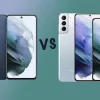What is E-Ink Technology, and Why Does It Matter? E-Ink technology has become synonymous with innovation in the world of digital displays, offering unique advantages over traditional LCD and LED screens. From e-readers to digital signage, E-Ink has revolutionized the way we interact with visuals. But what exactly is E-Ink, and why should you, as
What is E-Ink Technology, and Why Does It Matter?
E-Ink technology has become synonymous with innovation in the world of digital displays, offering unique advantages over traditional LCD and LED screens. From e-readers to digital signage, E-Ink has revolutionized the way we interact with visuals. But what exactly is E-Ink, and why should you, as a tech enthusiast or digital nomad, care?
This blog dives into the history, applications, and environmental significance of E-Ink. Whether you’re passionate about gadgets or curious about the sustainability of display technology, keep reading to explore what makes E-Ink a game-changer in the tech world.
1. A Brief History of E-Ink Technology

Image by Yandex.com
E-Ink, short for “electronic ink,” originated in the late 1990s when Joseph Jacobson and a team of researchers at MIT’s Media Lab sought to create a display technology that could mimic the look and feel of ink on paper. The idea was to craft a display that consumed minimal power while remaining visually comparable to physical paper.
By 1997, E Ink Corporation was founded, and the first commercial e-reader, the Sony Librie, hit the market in 2004. The release of Amazon’s Kindle in 2007 catapulted E-Ink technology into mainstream consciousness. Since then, advances in E-Ink have led to its adoption across industries ranging from education to retail.
2. How Does E-Ink Work?
At its core, E-Ink operates using tiny microcapsules filled with black and white particles suspended in liquid. These microcapsules are sandwiched between electrodes. Depending on the electrical charge applied, black or white particles rise to the surface, creating text or images on the screen.
This process, known as electrophoretic motion, utilizes ambient light to make images visible, rather than backlighting typical of LCDs and LEDs. This not only reduces power consumption but also ensures excellent readability even under direct sunlight—making E-Ink highly suitable for devices such as e-readers.
Key Features of How E-Ink Works
- Low Power Consumption: E-Ink screens consume power only during screen updates, not while displaying a static image.
- Paper-Like Readability: Because they reflect ambient light, E-Ink displays closely mimic the appearance of printed text.
- Monochromatic by Design: Most E-Ink displays are grayscale, though advancements have introduced colored E-Ink panels.
3. Advantages and Disadvantages of E-Ink Technology
E-Ink technology serves as a perfect combination of innovation and practicality, but like any technology, it comes with pros and cons.
Advantages
- Extended Battery Life: Devices with E-Ink displays can last weeks on a single charge.
- Eye Comfort: E-Ink is easy on the eyes, thanks to its lack of backlighting and glare-free surface.
- Sustainability: By reducing energy demands, E-Ink devices have a smaller carbon footprint.
Disadvantages
- Limited Color Range: While strides have been made in color E-Ink displays, they still lag behind the vividness of LCD/LED screens.
- Slower Refresh Rates: E-Ink screens are not ideal for video content or rapid page flipping.
- Cost: Producing E-Ink displays remains more expensive than traditional LCDs.
4. Applications of E-Ink in Daily Life

Image by Yandex.com
E-Ink may have started with e-readers, but its use has expanded across multiple industries.
Consumer Electronics
- E-Readers: Devices like Kindle and Kobo have made E-Ink a household name.
- Smartphones: Dual-screen smartphones like the YotaPhone use E-Ink for their secondary displays.
Retail and Hospitality
- Digital Signage: E-Ink screens are commonly used in electronic shelf labels, storefront displays, and menu boards.
- Smart Pricing Tags: Retailers benefit from cost-efficient, easy-to-update E-Ink tags.
Education
- E-Textbooks: Lightweight and easy-to-read, E-Ink tablets are growing popular in schools and colleges.
- Notetaking Devices: Products like the reMarkable tablet cater to students and professionals seeking a paperless experience.
Transportation
- Bus Stop Timetables: Cities leverage E-Ink for solar-powered public transport information.
- License Plates: Several countries are experimenting with E-Ink for adaptable, digital license plates.
5. The Environmental Impact of E-Ink Technology
Sustainability has become a critical consideration for technology, and E-Ink performs exceptionally well in this area.
Energy Efficiency
E-Ink’s low power consumption reduces the amount of electricity required to operate devices. Some E-Ink displays are even solar-powered, further minimizing energy usage.
Reduced E-Waste
Instead of regularly replacing printed paper or updating static signage, E-Ink signs and devices offer reusable alternatives, cutting down on waste.
Eco-Friendly Innovations
Many E-Ink products incorporate recycled materials in their designs, reflecting their commitment to sustainability.
By choosing E-Ink, businesses and consumers alike can contribute to environmental conservation.
6. E-Ink vs. Traditional Displays
How do E-Ink displays stack up against conventional LCD and LED screens? The answer lies in their applications.
|
Feature |
E-Ink Displays |
LCD/LED Displays |
|---|---|---|
|
Power Consumption |
Extremely low |
High |
|
Color Vibrancy |
Limited |
Wide and vivid |
|
Visual Comfort |
Paper-like readability |
Can cause eye strain |
|
Refresh Rates |
Low |
High (ideal for videos) |
|
Use Case |
Reading, signage |
Multimedia, gaming |
E-Ink thrives in specific niches such as reading or static displays, whereas LCD/LED reign supreme for dynamic visual content.
7. The Future of E-Ink Technology

Image by Yandex.com
The future of E-Ink is brimming with possibilities. Some emerging trends include:
- Full-Color E-Ink Displays: Technological advancements are paving the way for richer and more vibrant colored displays.
- Flexible E-Ink: Bendable displays could soon be integrated into wearables, rollable screens, or other innovative devices.
- E-Ink in Smart Homes: Imagine thermostats, interactive books, or even wallpaper powered by E-Ink.
Companies are investing heavily in research and development to expand E-Ink’s use cases, ensuring its role as a staple in the future of digital displays.
Why E-Ink Is Worth Your Attention
E-Ink technology redefines how we think about digital screens, blending innovation with sustainability. Its applications in daily life make it an adaptable and environmentally-conscious choice for tech enthusiasts and industry professionals alike.
Have you tried an E-Ink device, or are you intrigued by its potential? Share your thoughts and join the discussion in the comments below!
















